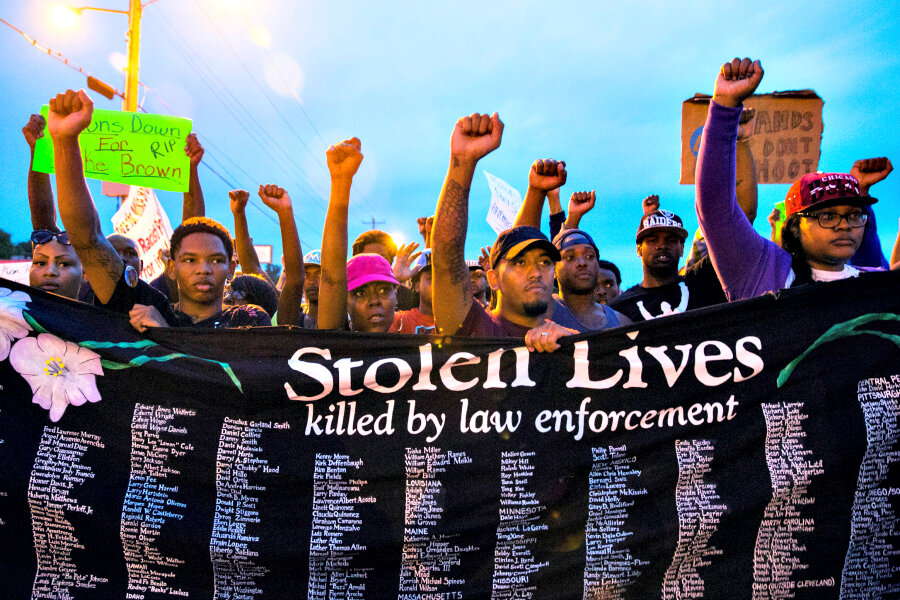Smarter police work
Loading...
At this writing it’s too soon to know if the street violence in Ferguson, Mo., is ebbing. But it’s not too soon to ask what lessons can be learned.
The Aug. 9 shooting death of Michael Brown, an unarmed black teenager, by a member of the local police department has led to peaceful protests against the use of excessive force by police in a community that is mostly African-American but whose police department is overwhelmingly white. It has also led to looting and vandalism.
The deployment of heavily armed police in military-style body armor has seemed to many to be an overreaction. Officers need to protect themselves when put in potentially dangerous situations. But scenes of police in riot gear advancing on unarmed crowds don’t evoke an image of a department that wants most of all “to protect and to serve” its community.
Heavy armament needs to be part of the arsenal of many police departments, especially those in larger cities who may confront terrorists or gun-toting criminal gangs. But as Ferguson is proving, its use against ordinary citizens enraged by what they see as an injustice may only add more flames to the fire of indignation.
There are lessons here for police departments everywhere. An obvious one is that the men and women in police uniform ought to reflect the racial makeup of the community, at least to some degree.
But even this kind of quota system doesn’t get at the deepest issue: trust. Regardless of race, police officers who don’t feel they are part of the community they patrol, and a community that feels the officers are faceless people in blue uniforms, are unlikely to trust each other when an incident occurs.
Community policing puts police on the streets before a tragedy strikes. Their chief role isn’t to knock heads and take names but to get to know community members and what’s on their minds, to prevent crime as much as to chase criminals down. These police want to be seen more as “protectors” than “enforcers.”
Cincinnati and Los Angeles reformed their police departments after riots, with positive effects. They and many other cities have worked with citizens, listening and taking a “we’re in this together” approach. This kind of policing takes time to tell people what actions are being taken and why. Officers return to a neighborhood after an incident to ask questions and hear complaints. Then the trust and relationships built over time can pay big dividends when a crisis erupts.
Missouri’s top law enforcement officials are hastily trying to rebuild bridges to the Ferguson community. Both Missouri State Highway Patrol Capt. Ronald Johnson, an African-American who now heads the security team in Ferguson, and Missouri Attorney General Chris Koster, who is white, have offered apologies and promises.
“Michael [Brown]’s going to make it better for our sons so they can be better black men,” Johnson told members of the Ferguson community. “We need to pray. We need to thank Michael for his life. And we need to thank him for the change that he is going to make.”
“This week is a 50-year flood of anger that has broken loose in this city the likes of which we have not seen since Dr. [Martin Luther] King [Jr.] was killed,” Attorney General Koster said. “And I am sorry that I have not done more from the law enforcement community to break down that wall of anger, that wall of armor.”
Good words – and a good starting point. Now Ferguson must seize this opportunity to rise above a tragedy and help show other American communities the path to a better way of policing.





